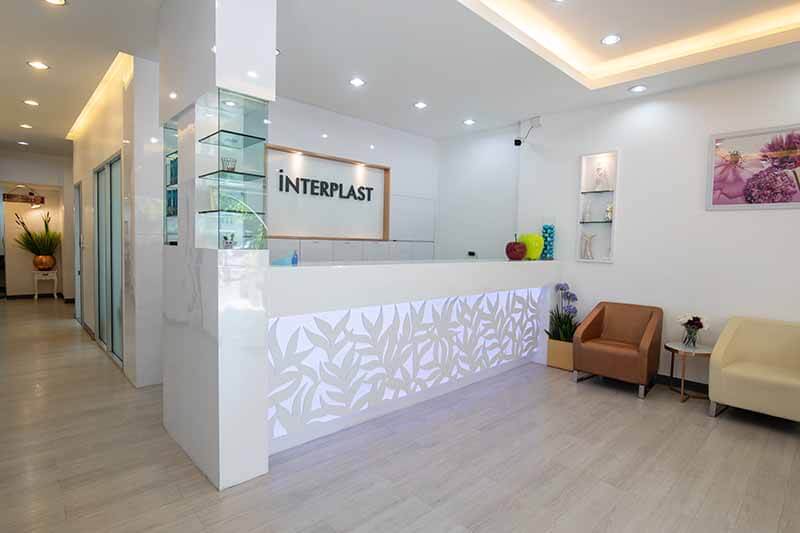Managing Swelling After a Facelift
Swelling and bruising is completely normal after facelift surgery. All surgery involves incisions, which causes trauma to the underlying tissues. Swelling occurs as the body’s natural response, and is a normal part of that healing process.
After a facelift, swelling will generally last up to two weeks. Bruising and temporary discolouration will also present initially, and that is also completely normal. Some people may experience partial numbness in the face, particularly in the lower part of the face. This may last up to six months. Again, this is completely normal.
Temporary muscle weakness in one part of your face is also normal. It could be the corner of your eye, or the corner of your mouth.
Table of Contents
Postoperative Regimen to Manage Swelling
Showering is allowed 24 hours after surgery.Clean your face with a mild, non-irritating soap. Use lukewarm water and avoid scrubbing too harshly.
Sleeping with your head elevated in the first few nights is key to help prevent some of the swelling. Don’t try to sleep on your face or on the side of your face for the first few weeks as that could cause uneven or asymmetric swelling (swelling that occurs more on one side of the face than another).
The incisions can take a long time to heal but you’re going to start seeing results around the 4 week mark post-surgery. At six weeks a lot of the swelling will have subsided and the full results will be visible by six months.

The First Week of Post-recovery Day By Day:
Day of Surgery
After waking up from surgery your head will be covered in surgical wrappings. The purpose of this is compression which helps hold the skin down against the tissues after they’ve been lifted. It also soaks up fluids. There will be a lot of swelling but typically the tissues will be numb, so there’s not a lot of pain at first. Once the anaesthesia wears off, there will probably be some discomfort but this tends to feel more like pressure as opposed to stabbing pain. For many patients, the post-operative pain and discomfort can be controlled with OTC pain medication like paracetamol (acetaminophen).
Day 1 Post Surgery
Resting and recovering at home. At this point the tissues start becoming more swollen. Fluid enters the healing area and swelling begins to expand. So the swelling will actually get increasingly worse over the next few days.
Most of the time you should be sitting up and avoid lying down. Lying down means more blood to the head which will make swelling worse. Sitting up helps the blood flow down away from the head.
Days 2-4 Post Surgery
Bruising and swelling will continue to increase, hitting their peak around day 3 or 4, although both will continue to be present to some extent for a few more weeks. Applying ice packs to your face can help reduce this. Remember that the swelling is just the normal part of the recovery process. You are getting better even if it may not immediately seem so.
Days 5-7 Post Surgery
Swelling and bruising will start to subside around day 5 or 6. By the day 7 mark your face should look significantly better and you will begin to notice the results of your facelift.
Days 7-14
At this point, healing accelerates very quickly with noticeably less swelling and bruising day by day. Most people will be healed well enough to go back to work after two weeks. If you’re travelling to Thailand for surgery, keep in mind that you should plan to stay in Thailand for 7-10 days after surgery before flying home. This allows time for healing and post-operative care. Additionally, avoiding long flights after surgery minimises blood clot risks.
Tips For Managing Swelling After a Facelift:
- Sleeping with your head
elevated is important especially during the first few days following surgery. Use extra pillows to prop up your head while sleeping. - Red light therapy
Red light therapy can reduce inflammation and swelling and accelerate healing. Red light therapy can be used after healing has begun, usually around 3-5 days post-surgery - Sleep is important:
You may want to take a magnesium supplement to help you sleep. Magnesium is known for its relaxing properties and is often recommended for people who have trouble sleeping. - Stay hydrated:
Water will help flush out toxins. - Apply ice packs:
Ice can help reduce swelling and discomfort. Never apply ice directly on the skin, however. Wrap the ice pack in a soft cloth like a tea towel and apply on the swollen area for 15 to 20 minutes at a time.
What to watch out for:
Facelift surgery is generally considered safe. But as with all surgery, there is a possibility of risks and complications. Usually if anything was to go wrong, it’s likely to happen within the first week following surgery. After that the possibility of complications is much lower.
Contact your surgical team immediately if you notice any of the following:
- Immediate swelling on one side could be a hematoma (pooling of blood outside the veins). If your drains start filling up with fluid or blood, that could be a problem, so contact your surgical team immediately if that starts to happen.
- Redness, increasing swelling and fever. If you notice any redness that starts from your incisions and starts spreading to different parts of your face, it could be a sign of an infection.
- Double vision or severe pain in your eyes that’s constantly getting worse.
- If you have persistent nausea and vomiting.

Facelift Surgery at Interplast Clinic, Bangkok
If you’re concerned about visible signs of facial aging, a facelift may be a good option. The best way to determine if you’re a suitable candidate is to consult with a facial plastic surgeon. Our board-certified plastic surgeons have performed facelift surgeries in Thailand for over 20 years, and are highly qualified to assess whether a facelift would be a suitable option for you. Use the WhatsApp widget or click the link below to book a free virtual consultation.














